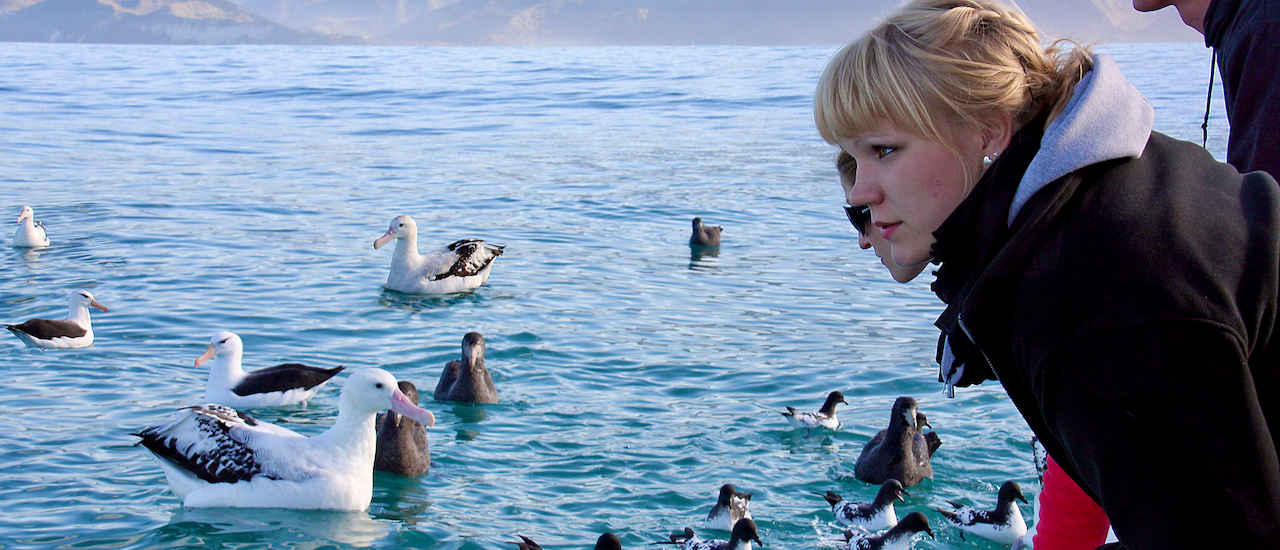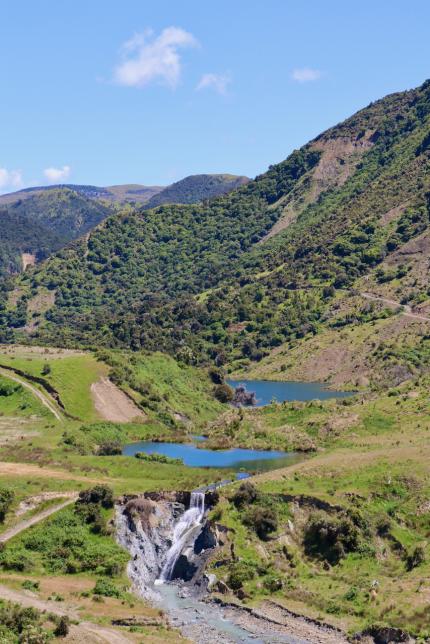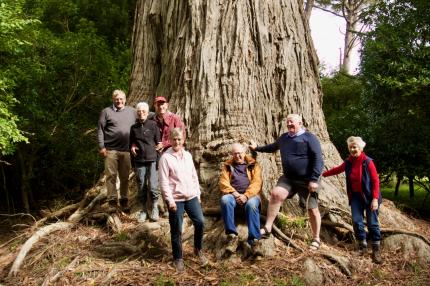
Exploring the secret spots of inland Kaikōura
Discover the hidden gems of Kaikōura on a Driftwood Eco Tour.
Kaikōura is famous for whale watching and crayfish, but for many travellers it’s a quick stop on the way to somewhere else. I spent a leisurely five days there with Driftwood Eco-Tours , exploring the area from the mountains to the sea. Our small group met locals in wool sheds and on walking tracks, listening to their stories and discovering places far from the usual tourist route.
The tour leaders, Will Parsons and Bob Kingscote, knew the area well. On the first day we drove from Kaikōura to Waiau, through the area where Bob once farmed. At Waiau we stopped to look at the church damaged in the 2016 Kaikōura earthquake, as Bob recalled going inside with other parishioners to rescue its contents. We would hear more stories of the earthquake during the next few days.
“You’re in for an adventure,” said Rebekah Kelly as she welcomed us to Woodchester, farmed by her family for 100 years. The farm was near the epicentre of the earthquake, which destroyed most of the fences and the water system. It also triggered a massive slip that blocked the Leader River, forming a lake.

We drove several kilometres to a bluff overlooking the river. Here, Rebekah pointed out the lake and the slips still scarring the surrounding hills. After the quake she was interviewed by a reporter who asked if the lake had a name. It didn’t, so, on the spur of the moment, she decided to call it Lake Rebekah.
Scientists have become regular visitors to the farm to study the effects of the earthquake and Rebekah shared some of their research with us before lunch at a tree-shaded table and a wander around the homestead garden admiring peonies and azaleas.
The earthquake also affected local wildlife, as we learned the next day at Puhi Peaks Station. A QEII covenanted conservation area protects one of the last remaining colonies of the Hutton’s Shearwater, an endangered species found only in Kaikōura. About 3,000 birds nest at the station, and some nests were destroyed by the earthquake.
A very early morning boat trip took us out to spot Hutton’s Shearwaters flying from their mountain colony out to sea in search of food. Mist lay over the land and the sea was still. In these calm conditions, we were lucky to see a flock of about 200 shearwaters, while albatrosses paddled close to the boat for a better view of the humans.
After breakfast we drove inland to Puhi Peaks. Nicky McArthur, the station’s owner, met us at the front gate along with the station manager, Wayne. Here Nicky pointed out the boundaries of Puhi Peaks, extending as far as the skyline, before we drove along a bumpy track to the wool shed. Then we walked through bush, spotting rare plants, finally arriving at an open plateau. We looked across the valley to the steep, rocky slopes where the Hutton’s Shearwaters nest. Clouds briefly obscured the view before being blown away by a cold southerly.
Over a lunch of bacon and egg pie and beetroot, carrot and coriander salad, Nicky talked about the Hutton’s Shearwater Trust, formed to protect the birds. Local volunteers have established a new nesting area and rescue injured birds blinded by the town’s lights at night.
One of many discoveries for me was the passion that Kaikōura people have for the environment they live in. At Medina, David and Sally Handysides have been sharing their love of the land with walkers for 26 years through the Kaikōura Coast Track. Down on the beach where the first day of the walk ends, a long strip of sand stretches away beneath rugged cliffs. We walked through a gate with a sign threatening a penalty of forty shillings for 'any person who omits to shut and fasten this gate.'

Over morning tea in a cosy shelter hut built from recycled materials, David told us stories of Medina and other farms in the area, many established by returned servicemen. Our walk started on a grassy cliff top with a spectacular view up and down the coast, then through protected native forest with huge kahikatea, mataī and tōtara trees. Some of the group decided to test how many people it would take to encircle one of the largest kahikatea; six just managed to reach around the tree with arms outstretched and fingertips touching.
After lunch, two helicopters flew us back to Kaikōura. We spotted seals lying precariously on steep cliffs as we listened to the pilot describing manoeuvring the helicopter into tight landing places during the post-earthquake rebuild of State Highway 2.
The helicopters landed on the back lawn of Te Mahuru Retreat to a welcome from our host Jen. Over four nights our group of eight had got to know each other. That night, our last together, we ate the best fish and kumara chips in Kaikōura and talked about what we had enjoyed on the tour, places we had travelled to before, and where we hoped to visit. It turned out that most people had been on a Driftwood Eco Tour before and some were already planning to go on another. Driftwood’s local knowledge and contacts mean their guests get to explore places most visitors don’t see. We were a well-travelled bunch, with some sharing tales of exotic destinations, yet all of us enjoyed this authentic experience of life in our home country.
Reported by Denise Stephens for our Spring 2022 issue
